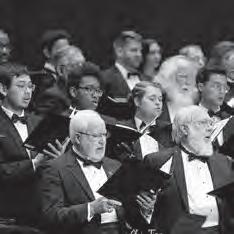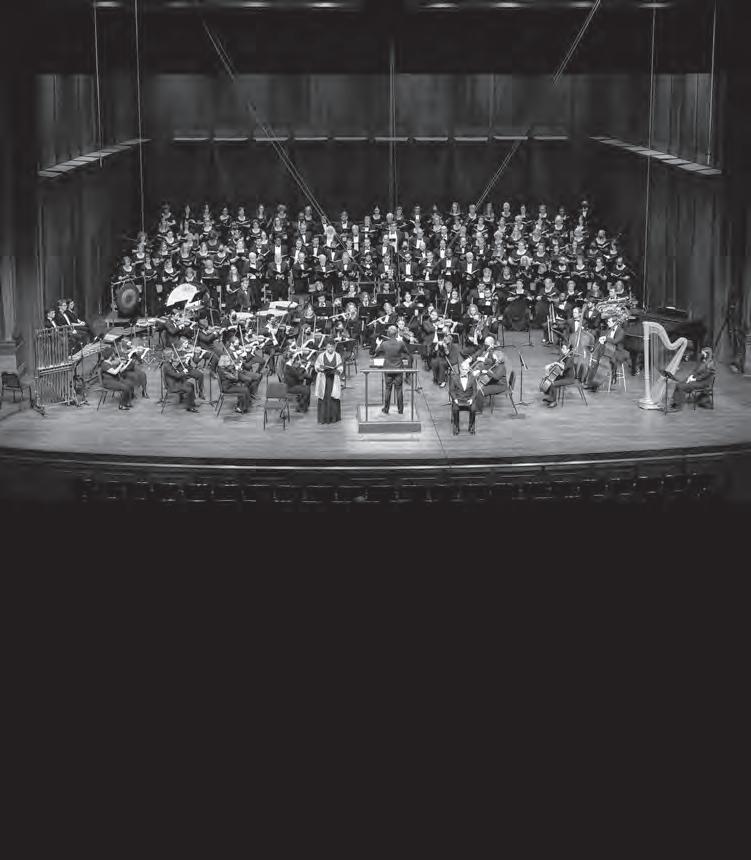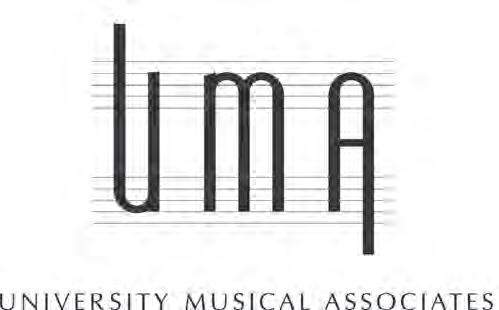THE FLORIDA STATE UNIVERSITY
COLLEGE OF MUSIC Presents THE UNIVERSITY
PHILHARMONIA
Alexander Jiménez, Music Director and Conductor
Nathan Haines, Graduate Associate Conductor
Thursday, April 13, 2023
Seven-thirty in the Evening
Ruby Diamond Concert Hall
Festive Overture, Op. 96
Nathan Haines, graduate associate conductor
Dmitri Shostakovich (1906–1975)
Antares for Chamber Orchestra Dingjie Zhou (b. 1990)
Nathan Haines, graduate associate conductor
INTERMISSION
Symphony No. 4 in F minor, Op. 36
Illyich Tchaikovsky Andante sostenuto – Moderato con anima (1840–1893)
Andantino in modo di canzona
Scherzo: Pizzicato ostinato
Finale: Allegro con fuoco
Please refrain from talking, entering, or exiting while performers are playing. Food and drink are prohibited in all concert halls. Please turn off cell phones and all other electronic devices. Please refrain from putting feet on seats and seat backs. Children who become disruptive should be taken out of the performance hall so they do not disturb the musicians and other audience members.
Alexander Jiménez serves as Professor of Conducting, Director of Orchestral Activities, and String Area Coordinator at the Florida State University College of Music. Prior to his appointment at FSU in 2000, Jiménez served on the faculties of San Francisco State University and Palm Beach Atlantic University. Under his direction, the FSU orchestral studies program has expanded and been recognized as one of the leading orchestral studies programs in the country. Dr. Jiménez has recorded on the Naxos, Neos, Canadian Broadcasting Ovation, and Mark labels. Deeply committed to music by living composers, Dr. Jiménez has had fruitful and long-term collaborations with such eminent composers as Ellen Taafe Zwilich and the late Ladisalv Kubik, as well as working with Anthony Iannaccone, Krzysztof Penderecki, Martin Bresnick, Zhou Long, Chen Yi, Harold Schi man, Louis Andriessen, and Georg Friedrich Haas. e University Symphony Orchestra has appeared as a featured orchestra for the College Orchestra Directors National Conference and the American String Teachers Association National Conference, and the University Philharmonia has performed at the Southeast Conference of the Music Educators National Conference (now the National Association for Music Education). e national PBS broadcast of Zwilich’s Peanuts’ Gallery® featuring the University Symphony Orchestra was named outstanding performance of 2007 by the National Educational Television Association.
Active as a guest conductor and clinician, Jiménez has conducted extensively in the U.S., Europe, and the Middle East, including with the Brno Philharmonic (Czech Republic) and the Israel Netanya Chamber Orchestra. In 2022, Dr. Jiménez led the Royal Scottish National Orchestra in a recording of works by Anthony Iannaccone. Deeply devoted to music education, he serves as international ambassador for the European Festival of Music for Young People in Belgium and serves as Festival Orchestra Director and Artistic Director for the Blue Lake Fine Arts Camp in Michigan. Dr. Jiménez has been the recipient of University Teaching Awards in 2006 and 2018, e Transformation rough Teaching Award, and the Guardian of the Flame Award which is given to an outstanding faculty mentor. Dr. Jiménez is a past president of the College Orchestra Directors Association and served as music director of the Tallahassee Youth Orchestras from 2000-2017.

Nathan Haines is the doctoral assistant for the orchestra program at Florida State University, under the mentorship of Dr. Alexander Jiménez. At FSU, he serves as the associate conductor of orchestras, teaches courses in conducting, and pursues research in the art of conducting and music education.
A er obtaining his Bachelor’s degree from Brigham Young University, Haines obtained his Masters of Music with an emphasis in orchestral conducting with Kory Katseanes. Haines’s music career has taken him to venues across the globe; including performances in Asia and Europe. In addition, he has studied with top professionals from around the country, including Neil Varon from the Eastman School of
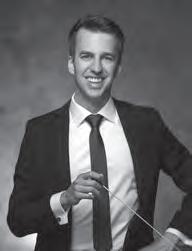
Music and the United States Army Band “Pershing’s Own” in Washington, D.C.
Haines is a strong advocate for the orchestral arts, particularly in new and innovative projects. In 2021, he co-founded the Studio Orchestra at FSU to create and perform music in lm, video game, and other commercial media. He recruited over 80 students, faculty, and sta to participate, serving as both president and music director. Earlier in his professional career, Haines served as the principal conductor and music director of the Utah Philharmonic Orchestra in Blu dale, UT. Over the course of three seasons he led growth e orts that doubled the size of the orchestra and signi cantly increased audience attendance through his innovative and engaging programming.
As a rm believer in the importance of music education, Haines has presented his research at both the state and national levels. Most recently he has been invited to present his paper “Engaging with Film & Video Game Music’’ at the National Association for Music Education Conference in Washington, D.C. He has also presented papers at the Florida Music Educators Association in Tampa, FL and was recently invited as a conducting fellow for the College Orchestra Directors Association national conference in Jacksonville, FL.
ABOUT THE FEATURED COMPOSER
Composer and multimedia artist Dingjie Zhou (b. 1990, China) has become recognized for his multi-disciplinary reach and his vast creative curiosity. Drawing on his deep interest in nature, humanities, and culture, Zhou’s diverse works o en fuse his music with video, digital soundscape, and photography. Zhou’s work has been performed throughout the United States and internationally and has been presented at events such as the Electronic Music at SYCM, SCI conferences, Asian Festival, ailand International Composers’ Festival, and the Luxun Academy of Fine Arts Animation Festival. As a recipient of the Ellen Taa e Zwilich Fellowship, Zhou had been invited for the residency with Florida State University orchestras and had been commissioned by University Philharmonia. His current projects include creating multimedia music for vernacular architecture project in Nanjing, China, collaborating with TCC Dance Company, and presenting his new electroacoustic music with EChO. Zhou has degrees from the Shenyang Conservatory of Music (Shenyang, China) and Florida State University. His teachers and mentors have included Ellen Taa e Zwilich, Mark Wingate, Liliya Ugay, Eren Gümrükçüoğlu, Jianping Tang and Zheming Fan.
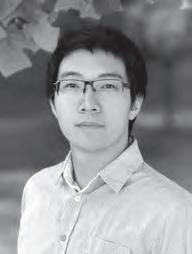
NOTES ON THE PROGRAM
Shostakovich: Festive Overture
As the FSU Spring semester draws to a close, those of us facing impending deadlines can nd motivation in the story of the creation of Dmitri Shostakovich’s Festive Overture, a tale of true artistic genius.
In the fall of 1954, Shostakovich was visited by a conductor from the Bolshoi eater Orchestra who needed a new work to celebrate the October Revolution in just three days. Without missing a beat, Shostakovich sat down at the piano and began to compose with astounding speed. His friend Lev Lebedinsky, who witnessed the scene, recounted, “ e speed with which he wrote was truly astounding. Moreover, when he wrote light music he was able to talk, make jokes and compose simultaneously, like the legendary Mozart. He laughed and chuckled, and in the meanwhile work was under way and the music was being written down.”
Some scholars have attributed Shostakovich’s lighthearted and exuberant approach to the Festive Overture as a result of Joseph Stalin’s death and the hopeful end of artistic oppression under the Communist Party. is exuberance is re ected in a grandiose brass fanfare that launches into a lively sonata form of unbridled merriment.
Despite the incredibly fast tempo of the piece, Shostakovich’s writing shows no signs of being on a rushed deadline. e clever orchestration, catchy melodies, and lively spirit of Festive Overture have made it a popular favorite among orchestras worldwide.
– Nathan HainesZhou: Antares
Antares is the brightest star in the constellation of Scorpius. It is a red supergiant, a large evolved massive star and one of the largest stars visible to the naked eye. A er moving to Florida, I began to involve myself in various outdoor activities, such as hiking, shing, and star gazing. I also learned to photograph the Milky Way. While researching the process, I found that if I can locate the Antares, then I will not miss the Milky Way. It is very much like nding the direction in a dark night.
e piece is dedicated to the Florida State University Philharmonia. It had been a great honor that I could work with them and learn from Dr. Jiménez. e year that I observed the orchestra rehearsals during the Pandemic was a unique experience.
ere are three sections in the music and I am trying to paint the color that expresses the beauty of a night sky.
– Dingjie ZhouTchaikovsky:
Symphony No. 4
ere is some irony in the fact that some of Tchaikovsky’s best-known works come from one of the darkest periods of his life. In the midst of a marriage that was doomed from the start, and even caused Tchaikovsky to believe that his own death was imminent, came a symphony that he called, “the best I have made yet.” e composer’s thoughts on his life and his works from this period are fortunately available to us today through his correspondences with his generous patroness, Nadezhda Filaretovna von Meck, a woman whom he never met, but still held in the warmest regard. By May 1877 he decided to dedicate this symphony to her and, demonstrating his a ection, told her the work would be, “dedicated to my friend.” Tchaikovsky provided detailed descriptions to von Meck for the program of this symphony, elucidating the intensely personal meaning of each section of the work.
e opening of the fourth symphony spares no subtlety in announcing its arrival to the audience. e horns and bassoons present a fanfare declamation in octaves that immediately engages the listener while also providing the basis for the whole symphony. Tchaikovsky calls this motive “Fate, the malign power which hinders one in the pursuit of happiness from gaining the goal...that poisons continually the soul.” e rst subject to follow this fanfare maintains the same sensibility. In 9/8 meter, this more melodically engaging line initiates a dance, but without any of the gaiety and frivolity that one might expect. Instead, Tchaikovsky forces the question, “Would it not be wiser to sink from reality and sink into dreams?” is pervading depression does not go unchallenged. e clarinets and bassoons provide a brief reprieve from the solemnity before the entire orchestra responds in a forceful and determined manner.
A lone oboe captures the full emotive signi cance of the second movement in its lamenting opening solo. Tchaikovsky described this movement as “another phase of su ering.” He further explained, “It is the melancholy that comes in the evening when we sit alone, and weary of work, we try to read, but the book falls from our hand.” e lonesome sensation is perhaps expressed in the simplicity of the solos overtop sparse accompaniment throughout much of the opening. is temperament is not consistent throughout the entire work. Instead, the middle section of the movement introduces a more optimistic march-like section in which the motion increases. e end of the movement initiates the return of the original material, leaving the solo nally to the bassoon.
In no uncertain terms, Tchaikovsky throws o the emotional weight of the previous movements for his third movement, Scherzo. Although he identi es that “the soul is neither gay nor sad,” the lighter atmosphere is apparent throughout. By separating the orchestra into choirs of woodwinds, brass, and strings, Tchaikovsky uses the di erent timbres to delineate the sections. As the end of the movement approaches the music fades into the distance and lulls the listener into a relaxed place of comfort It is from this tranquil place that the cymbal crash that introduces the fourth movement and the urry of excitement immediately follows. Devastatingly fast runs in the strings maintain the frenetic pace of the nale. Interspersed with other themes comes the arrival of the fate motive from the beginning of the symphony. About this return Tchaikovsky writes, “Fate returns to remind you of yourself. But the others are indi erent to you.” Although this movement encapsulates a signi cant degree of emotive con ict the composer resolves, “how fortunate to be ruled by such simple immediate feelings! Enter into them, and life will be bearable.” As the symphony hurtles to its conclusion, the cymbal player attempts one of the hardest excerpts for the instrument for shear amount of consecutive crashes.
e simplicity of these emotions about which Tchaikovsky writes seem to be most present in the melodies of the fourth symphony. Surprisingly straightforward accompanimental gures prevent the obfuscation of the solo melodies and leave the listener with an unhindered understanding of Tchaikovsky’s deepest emotions.
– Reprint from Paul Luongo
University Symphony Orchestra Personnel
Alexander Jiménez, Music Director and Conductor
Nathan Haines, Graduate Associate Conductor
Violin I
Madelyne Garnot‡
Francesco Capitano
Christopher Wheaton
Joan Prokopowicz
Bailey Bryant
Mari Stanton
Elizabeth Milan
Sean Hartman
Gabriel Salinas-Guzman
Victoria Joyce
Sierra Su
Daniela Ramirez
Alyssa Donall
Hope Welsh
Violin II
Carlos Cordero*
Michelangelo Woodrich
Harshul Mulpuru
Kali Henre
Ismar Cabrera
Christopher Chiarotti
Elina Nyquist
Sarita osteson
Max Warren
Delaney Reilly
Alexander Roes
Ruby Moore
Karolyne Lugo
Viola
Keara Henre*
Emily Lombard
Phil Prasse
Spencer Schneider
Emma Patterson
Tyana McGann
Abby Felde
Harper Knopf
Cello
Emma Hoster*
Noah Hays
Abigail Fernandez
Caleb Singletary
Natalie Taunton
Jaden Sanzo
Liam Sabo
Luke Ponko
Marina Edwards
Sophie Stalnaker
Bass
Christian Maldonado*
Lucas Kornegay
Charles Storch
Layla Fester
Harp
Lauren Bar eld*
Flute
Ashleigh Wallace*
Peyton Dillon
Adeline Belova
Piccolo
Adeline Belova
Oboe
Sarah Ward*
Alec McDaniel*
Loanne Masson
Alexander Rushe
English Horn
Alexander Rushe
Clarinet
Jariel Santiago*
Sadie Murray*
Reymon Contrera
Joshua Collins
Bassoon
Ryder Kaya*
Carson Long*
Timothy Schwindt
Hannah Farmer
Horn
Alexandro Garcia*
Jordan Perkins*
AC Caruthers
Isaac Roman
Trumpet
Easton Barham*
Robert Kerr*
CarlosManuel
Aceves
Trombone
Christian Estades*
Connor Stross
Bass Trombone
Tristan Goodrich
Tuba
Matthew Morejon*
Percussion
Abby McNulty*
Jake Feno
James Wol
Gus Barreda
Will Howald
Orchestra Manager
Heather Simpson
Equipment Manager
Sierra Su
Administrative Assistant
Amanda Frampton
Orchestra Librarians
Nathan Haines
Miranda Rojas
‡ Concertmaster
* Principal

September 18, Bak & Chang, viola/piano
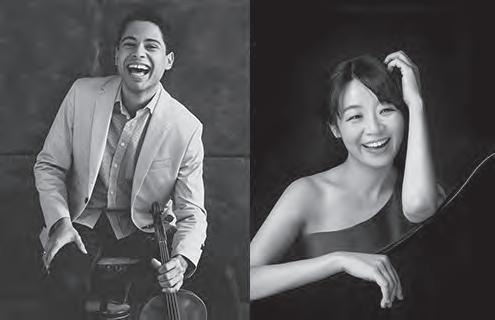
October 23, Dominic Cheli, piano
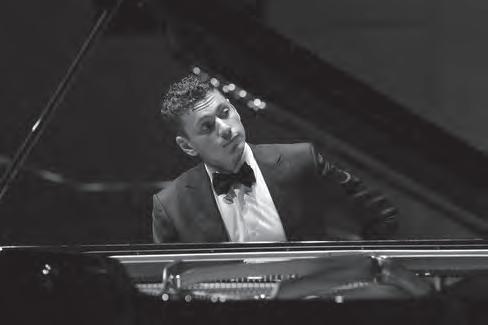
January 22, Sinta Quartet, saxophone
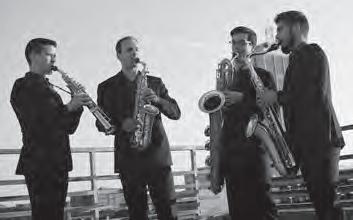
February 17, Jasper String Quartet, Valentine Fundraiser, 7 PM

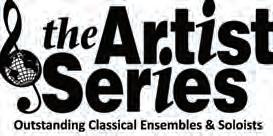

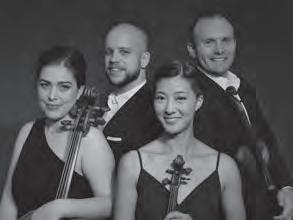
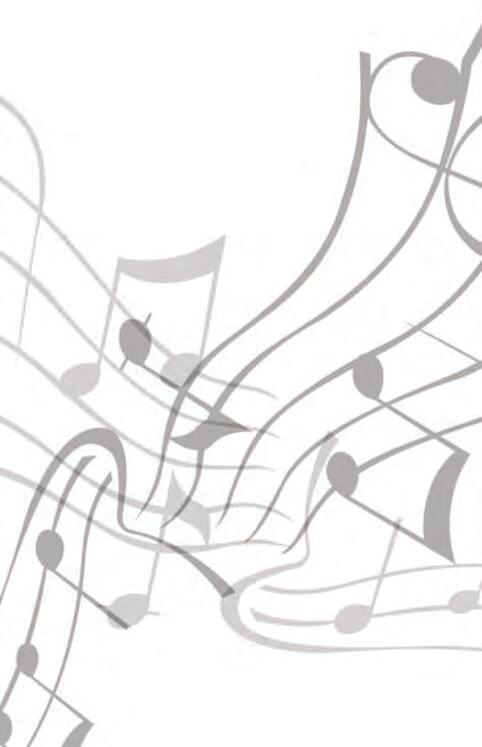
St. Peter’s Anglican Cathedral
March 5, Coro Vocati, vocal ensemble

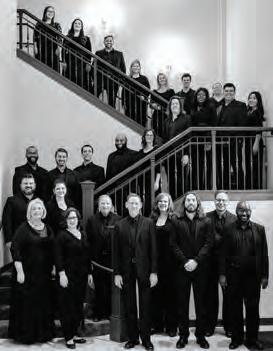

May 7, Cuarteto Latinoamericano, string quartet
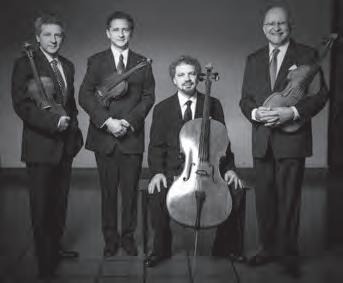
2022-2023 Concert Season
– Celebrating 35 Years of Song! –
FALL
Sunday, November 20 4:00 PM
Coronation Mass in C major, W.A. Mozart
*Tickets: tcchorus.org or call 850-597-0603
UNITY 16
Sunday, January 29 4:00 PM
“Repair The Future”
Weather, Rollo Dilworth, Poem by Claudia Rankine

Joined by The Florida A&M University Concert Choir
SPRING
Sunday, April 30 4:00 PM
Carmina Burana, Carl Orff
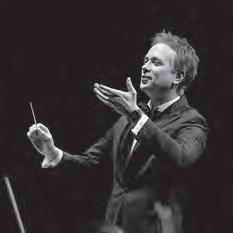
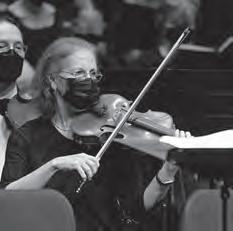
All performances in Ruby Diamond Concert Hall, The Florida State University
